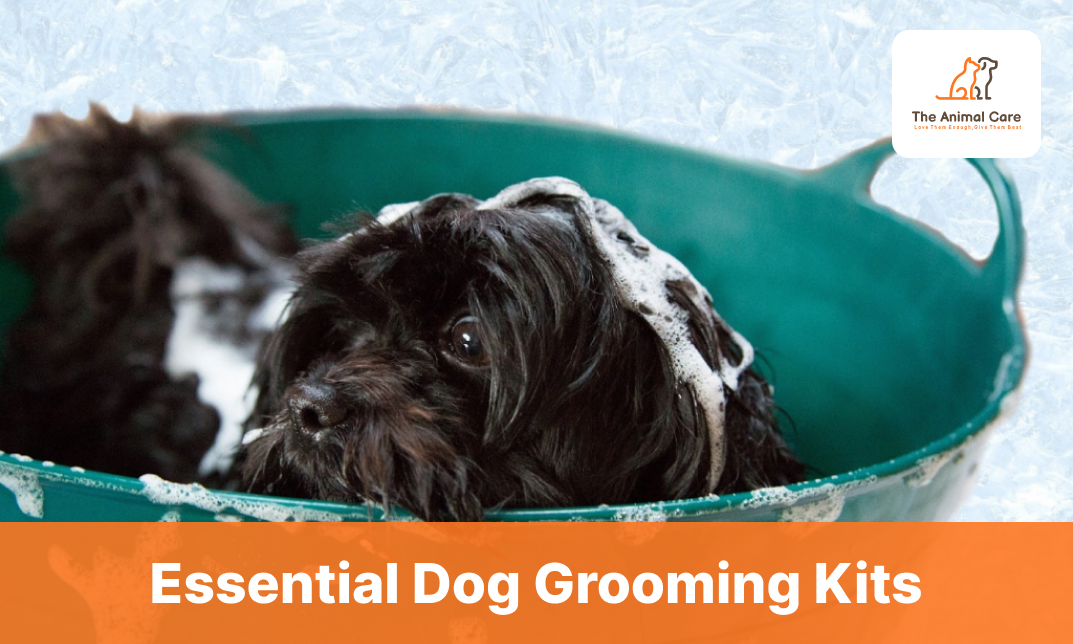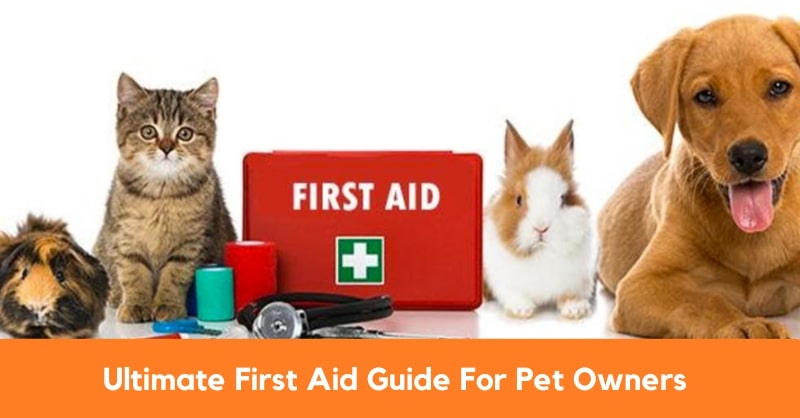Everything You Need To Know About Dog CPR
Dog CPR is a life-saving treatment involving artificial respiration and chest compressions to help resuscitate a dog who is not breathing or has no heartbeat, similar to human CPR. When a dog’s heartbeat or breathing tends to stop, oxygen concentrations in the blood decrease rapidly. The kidney, liver, and other important organs might collapse if they are not provided with enough oxygen. Whenever your dog is in distress, it’s imperative to respond promptly and effectively, as breathing trouble can result in brain damage.
It’s not fun to think about emergency scenarios that include your dog, but having a strategy in case anything unexpectedly occurs is a sensible move. Consult your dog’s vet for advice on how to get through emergencies. Accidents happen, and though they are terrible and hard to forecast, it is essential to be prepared to take a step quickly. Perhaps, a positive outcome will emerge from a bad circumstance.
Cardiac Arrest in Dogs: What Causes It?
A variety of circumstances can cause cardiac arrest in dogs. Some might be clinical crises that need emergency veterinary care, while others are chronic disorders or even underlying ailments. The intensity of the heart damage and other organs failure, including the progression of the ailment process, determine the consequence.
- Trauma: A common cause of cardiac arrest is trauma. Severe loss of blood or bodily damage can directly influence the heart’s capability to operate. Certain injuries may impair a dog’s capacity to breathe normally. Without an appropriate flow of oxygen to the brain, the other body parts won’t receive the instructions it requires to function. Significant damage to the heart muscle can also result from oxygen deprivation. Head trauma can also induce brain damage, which can lead to cardiac arrest. CPR may or may not be effective in dogs that have gone into cardiac arrest as a result of trauma. Some canines may be able to heal from certain traumas.
- Heart disease: Acute heart diseases can result in heart failure and, eventually, cardiac arrest. Certain types of heart disease might go undetected until a sudden cardiac arrest strikes. For most instances, dogs acquire heart disease that worsens over time till they die from cardiac failure. There are several forms of cardiac disease in dogs, such as congenital or acquired heart disease. Senior dogs are more likely to have cardiac problems. Certain dog breeds are predisposed to certain types of heart disease. Luckily, many forms of cardiac diseases may be controlled medically, prolonging survival periods and enhancing the quality of life in the interim.
- Exposure to Toxins: This can negatively impact numerous body systems and cause cardiac arrest. Various kinds of plant species, foods, chemicals, and many other things can be poisonous for dogs. Effects may vary depending on the type of toxin and the amount consumed by the dog.
- Heartworm disease: It is a parasitic infection that affects the heart. If left unattended, it can potentially lead to cardiac arrest. When a dog’s heart is infested with too many adult heartworms, the organ can no longer function correctly and shuts down. Furthermore, even just a single worm can kill your dog if it breaks off and travels to your dog’s lungs, known as a verminous embolism. The lungs can be severely damaged, resulting in a lack of oxygen reaching the heart, ultimately causing cardiac arrest.
- Complexities regarding anaesthesia: Despite being rare, it can still cause cardiac arrest. Fortunately, most veterinary facilities employ monitoring technology that detects abnormalities before the heart stops beating. The veterinary staff will take the required steps to try to reverse the process and reawaken the dog. While many dogs will survive anaesthesia difficulties, some will not be able to be revived.
- Electric shock: Dogs are prone to chewing on electrical cables. The heart may stop unexpectedly as a result of this. This is why electrical lines should be kept tucked away, so dogs don’t chew on them.
How Do You Perform CPR on a Dog?
Dogs can often be mischievous and playful, which can lead to various kinds of mishaps. Emergencies rarely occur under ideal circumstances or situations. If you somehow find yourself as the very first responder to a dog’s life-threatening emergency, call a veterinarian or an emergency animal clinic right away. However, getting expert treatment might take a while, so you may have to offer medical aid prior to and throughout the dog’s transportation to a veterinary institution. And also, if you are a dog owner, you must have basic knowledge of how to perform CPR on your dog. Here are few steps you need to take,
- Ascertain that the dog’s airway is open: Examine the throat for blockages by opening the mouth. A blockage or obstruction in the throat might cut off the dog’s breath supply and complicate CPR efforts. Before doing the dog’s CPR, ensure that the airway is clear.
- Look for signs of breathing and a heartbeat: Check for a heartbeat and see whether the pet is breathing. If you’re not seeing your pet’s chest moving and can’t locate a heartbeat, start CPR with chest compressions.
- Apply chest compression: Put your hands on your pet’s chest in the following manner and then compress your pet’s chest by pushing hard and rapidly at a pace of 100-120 compressions per minute, compressing 1/3 to 1/2 the area of your pet’s chest. Before compressing again, make sure the chest fully retracts (recoils).
Place the heel of one of your hands squarely over the pet’s heart and the second hand directly over the first hand for tiny dogs and deep-chested canines.
For dogs with deep chests, lay the heel of one hand over the broadest area of the chest and the other hand exactly over the first.
For barrel-chested dogs, lie the dog down on its back, one hand over the broadest region of the sternum, and the second hand directly over the first. Make sure your shoulders are squarely above your hands, and your elbows are locked.

- Give rescue breaths: To perform rescue breaths, lightly seal the dog’s lips and open the airway by extending the dog’s neck. Blow till you observe your dog’s chest expand by covering its nose using your mouth.
- Keep repeating CPR: Keep giving CPR while maintaining a 30-2 compression-to-ventilation ratio for mouth-to-snout airflow till your dog starts to breathe on its own again.

- Continue to monitor its heartbeat and breath: Inspect for its breathing and heartbeat, and CPR should be done in 2-minute cycles, with the compressions being performed by a different person each time. by two minutes.
- Seek aid: Keep performing CPR until you get to a veterinary hospital.

Essential Tips to Remember before performing CPR
- Assure the appropriate heart pace (100-120)
- Make sure the depth is accurate (2 to 2.4” or 5 to 6 cm)
- Allow for complete chest movement (avoid leaning)
- Keep interruptions to chest compressions to a minimum
- Avoiding over-ventilation
How Successful is Dog CPR?
A dog’s cardiac arrest is quite a quick process. It collapses, loses consciousness, stops breathing (although this sequence is not certain), and other bodily organs begins to terminate. Death is inevitable unless it can be revived within minutes. In general, a dog cannot live if the brain and other functions don’t get enough oxygen for about 4 to 6 minutes.
Unfortunately, the likelihood of successful CPR after cardiac arrest is minimal, approximately 13%, and the probability of hospital release following effective CPR is 16%. Even though the dog is resurrected, prolonged survival is relatively improbable. However, the odds of survival are frequently determined by the reason for cardiac arrest.
Symptoms Your Dog Require Emergency Assistance
There are several reasons why you might need to take your dog to an emergency clinic. While most dog owners can tell when their dog is unwell or wounded straight away, there are a few more indicators to look for when assessing whether or not your canine friend requires emergency treatment: Pale gums, rapid breathing, a weak or raised pulse, a change in body temperature, difficulty standing, apparent paralysis, loss of consciousness, seizures, excessive bleeding, and uncharacteristic violent behaviours are all signs that something is wrong.
If your dog exhibits either of these tendencies, it’s imperative to seek assistance without endangering your friend. If you’re competent in taking your dog to the veterinarian safely, do it as soon as possible. To prevent any more complications, ask for aid if your dog is frightened or aggressive.
First Aid for Dogs
If an uncertain emergency occurs, be patient and respond quickly. The first thing you should do is examine your dog. When you understand what’s wrong and how to deal with it, you may take steps to soothe your dog down. Then, call your veterinarian as rapidly as feasible. Follow your veterinarian’s recommendation, which is usually to bring your dog to the clinic asap.
You could gain knowledge about a few simple things that could save your dog’s life. It’s a wise practice as a dog owner to know some life-saving first aid basic concepts in case your dog has a medical emergency. Its goal is to preserve your dog’s life, mitigate its pain and distress, and reduce the risk of irreversible impairment or deformity. Thus, there are certain actions you may do to start first aid for your dog in related emergencies.
- Respiratory Distress and Choking: One of the main concerns of dog parents is ‘what to do if a dog stops breathing’. If you find your dog struggling to breathe or choking, open your dog’s mouth carefully and look for an airway blockage. If you can find an object, you may attempt to take it out. Take caution not to get bit. If you cannot remove the object, then try to lift your dog off the ground with its head down, and for bigger dogs, elevate the abdomen while raising the back end.
- Blood loss: If your dog is bleeding profusely from an external wound, delicately cover the injury with clean gauze or cloth and apply mild, consistent pressure. Raise the affected area if possible when it’s extremely bleeding. Try to not disrupt the wound by removing the gauze or cloth. If it is drenched with blood, gently put another layer of cloth or gauze while maintaining pressure on the wound until you arrive at the vet clinic, and a professional can take over.
- Broken bones: If you think your dog has fractured bones, keep that part as still as possible. Get your dog to the vet straight away so the fracture can be treated and pain medicine may be administered.
- Burns and scalds: Cool the burnt spot asap with cold water. Wet clothes or towels should be used to cover the burnt area. If a caustic material caused the damage, rinse with cold water for 15 minutes and get medical guidance from your veterinarian. Water should always be given to dogs that were exposed to heat or smoke from fire immediately after the condition has stabilised.
- Eye injuries: Eye injuries are usually distressing and might jeopardise your dog’s vision. If an abscess (grass awn, stick, hair, etc.) is visible, gently washing the eye with eyewash or contact lens saline solution may be able to remove it. Allowing the dog to touch the eye with its paws or against the furniture or carpet is not a good idea. As soon as practicable, consult a veterinarian.
- Seizures: Seizures can be caused by various factors, including eclampsia (milk fever in a nursing mother), toxicity, and epilepsy. If the mother has eclampsia, take the puppies away from her right away. Keep your dog in the dark, quiet, restricted location until medical care arrives once it has a seizure. Reach out of your dog’s mouth as you will get bitten. Please contact your veterinarian right away.
- Heatstroke: This is especially prevalent in hot weather when dogs are kept in automobiles with little air as their body’s temperature goes way up. Excessive gasping and evident discomfort are early clinical indications, although they can soon escalate to coma and death. Rectally take your dog’s temperature; heat exhaustion may occur if the temperature exceeds 40°C, and heatstroke is considered if the temperature exceeds 41.111°C. Minimise your dog’s body temperature as rapidly as possible using cool water, and keep the dog moist while transporting to the veterinary. Keep the automobile windows open to allow perspiration to assist lower your dog’s body temperature. Never use ice or ice water since it will cause the temperature to drop too rapidly, causing extra issues.
- GDV or Bloat: Gastric Dilatation-Volvulus is a serious situation in which the stomach twists as it fills with gas and/or food. This disease is extremely deadly for large, deep-chested dogs. It could be GDV if your dog develops an excessively enlarged belly, excessive lethargy, and, in rare cases, unproductive retching. The only thing you can do is get to the vet asap because there’s no first aid available.
You can also go through this life-saving course Pet First Aid and CPR Level 3, for more academic knowledge!
Recent Posts

Decoding Pet Speak: 10 Signs to Neve...
June 23, 2023
Top Tips to Start a Dog Walking Busi...
June 23, 2023
Everything About Animal Psychologist...
June 23, 2023
Essential Dog Grooming Kits
June 23, 2023
The Best Ways to Groom Your Dog at H...
June 23, 2023




















0 responses on "Dog CPR: The Ultimate Guide to Resuscitate your Pet"